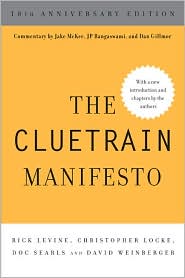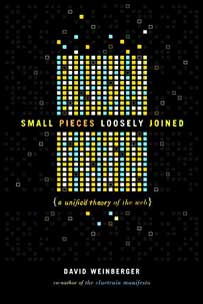May 6, 2018
[liveblog][ai] Primavera De Filippi: An autonomous flower that merges AI and Blockchain
Primavera De Filippi is an expert in blockchain-based tech. She is giving a ThursdAI talk on Plantoid, an event held by Harvard’s Berkman Klein Center for Internet & Society and the MIT Media Lab. Her talk is officially on operational autonomy vs. decisional autonomy, but it’s really about how weird things become when you build a computerized flower that merges AI and the blockchain. For me, a central question of her talk was: Can we have autonomous robots that have legal rights and can own and spend assets, without having to resort to conferring personhood on them the way we have with corporations?
|
NOTE: Live-blogging. Getting things wrong. Missing points. Omitting key information. Introducing artificial choppiness. Over-emphasizing small matters. Paraphrasing badly. Not running a spellpchecker. Mangling other people’s ideas and words. You are warned, people. |

Autonomy and liability
She begins by pointing to the 3 industrial revolutions so far: Steam led to mechanized production ; Electricity led to mass production; Electronics led to automated production. The fourth — AI — is automating knowledge production.
People are increasingly moving into the digital world, and digital systems are moving back into the physical worlds, creating cyber-physical systems. E.g., the Internet of Things senses, communicates, and acts. The Internet of Smart Things learns from the data the things collect, makes inferences, and then acts. The Internet of Autonomous Things creates new legal challenges. Various actors can be held liable: manufacturer, software developer, user, and a third party. “When do we apply legal personhood to non-humans?”
With autonomous things, the user and third parties become less liable as the software developer takes on more of the liability: There can be a bug. Someone can hack into it. The rules that make inferences are inaccurate. Or a bad moral choice has led the car into an accident.
The sw developer might have created bug-free sw but its interaction with other devices might lead to unpredictability; multiple systems operating according to different rules might be incompatible; it can be hard to identify the chain of causality. So, who will be liable? The manufacturers and owners are likely to have only limited liability.
So, maybe we’ll need generalized insurance: mandatory insurance that potentially harmful devices need to subscribe to.
Or, perhaps we will provide some form of legal personhood to machines so the manufacturers can be sued for their failings. Suing a robot would be like suing a corporation. The devices would be able to own property and assets. The EU is thinking about creating this type of agenthood for AI systems. This is obviously controversial. At least a corporation has people associated with it, while the device is just a device, Primavera points out.
So, when do we apply legal personhood to non-humans? In addition to people and corporations, some countries have assigned personhood to chimpanzees (Argentina, France) and to natural resources (NZ: Whanganui river). We do this so these entities will have rights and cannot be simply exploited.
If we give legal personhood to AI-based systems, can AI have property rights over their assets and IP? If they are legally liable, they can be held responsible for their actions, and can be sued for compensation? “Maybe they should have contractual rights so they can enter into contracts. Can they be rewarded for their work? Taxed?”Maybe they should have contractual rights so they can enter into contracts. Can they be rewarded for their work? Taxed? [All of these are going to turn out to be real questions. … Wait for it …]
Limitations: “Most of the AI-based systems deployed today are more akin to slaves than corporations.” They’re not autonomous the way people are. They are owned, controlled and maintained by people or corporations. They act as agents for their operators. They have no technical means to own or transfer assets. (Primavera recommends watching the Star Trek: The Next Generation episode “The Measure of the Man” that asks, among other things, whether Data (the android) can be dismantled and whether he can resign.)
Decisional autonomy is the capacity to make a decision on your own, but it doesn’t necessarily bring what we think of as real autonomy. E.g., an AV can decide its route. For real autonomy we need operational autonomy: no one is maintaining the thing’s operation at a technical level. To take a non-random example, a blockchain runs autonomously because there is no single operator controlling. E.g., smart contracts come with a guarantee of execution. Once a contract is registered with a blockchain, no operator can stop it. This is operational autonomy.
Blockchain meets AI. Object: Autonomy
We are getting first example of autonomous devices using blockchain. The most famous is the Samsung washing machine that can detect when the soap is empty, and makes a smart contract to order more. Autonomous cars could work with the same model; they could not be owned by anyone and collect money when someone uses them. These could be initially purchased by someone and then buy themselves off: “They’d have to be emancipated,” she says. Perhaps they and other robots can use the capital they accumulate to hire people to work for them. [Pretty interesting model for an Uber.]
She introduces Plantoid, a blockchain-based life form. “Plantoid is autonomous, self-sufficient, and can reproduce.”It’s autonomous, self-sufficient, and can reproduce. Real flowers use bees to reproduce. Plantoids use humans to collect capital for their reproduction. Their bodies are mechanical. Their spirit is an Ethereum smart contract. It collects cryptocurrency. When you feed it currency it says thank you; the Plantoid Primavera has brought, nods its flower. When it gets enough funds to reproduce itself, it triggers a smart contract that activates a call for bids to create the next version of the Plantoid. In the “mating phase” it looks for a human to create the new version. People vote with micro-donations. Then it identifies a winner and hires that human to create the new one.
There are many Plantoids in the world. Each has its own “DNA”. New artists can add to it. E.g., each artist has to decide on its governance, such as whether it will donate some funds to charity. The aim is to make it more attractive to be contributed to. The most fit get the most money and reproduces themselves. BurningMan this summer is going to feature this.
Every time one reproduces, a small cut is given to the pattern that generated it, and some to the new designer. This flips copyright on its head: the artist has an incentive to make her design more visible and accessible and attractive.
So, why provide legal personhood to autonomous devices? We want them to be able to own their own assets, to assume contractual rights, and legal capacity so they can sue and be sued, and limit their liability. “ Blockchain lets us do that without having to declare the robot to be a legal person.” Blockchain lets us do that without having to declare the robot to be a legal person.
The plant effectively owns the cryptofunds. The law cannot affect this. Smart contracts are enforced by code
Who are the parties to the contract? The original author and new artist? The master agreement? Who can sue who in case of a breach? We don’t know how to answer these questions yet.
Can a plantoid sure for breach of contract? Not if the legal system doesn’t recognize them as legal persons. So who is liable if the plant hurts someone? Can we provide a mechanism for this without conferring personhood? “How do you enforce the law against autonomous agents that cannot be stopped and whose property cannot be seized?”
Q&A
Could you do this with live plants? People would bioengineer them…
A: Yes. Plantoid has already been forked this way. There’s an idea for a forest offering trees to be cut down, with the compensation going to the forest which might eventually buy more land to expand itself.
My interest in this grew out of my interest in decentralized organizations. This enables a project to be an entity that assumes liability for its actions, and to reproduce itself.
Q: [me] Do you own this plantoid?
A: Hmm. I own the physical instantiation but not the code or the smart contract. If this one broke, I could make a new one that connects to the same smart contract. If someone gets hurt because it falls on the, I’m probably liable. If the smart contract is funding terrorism, I’m not the owner of that contract. The physical object is doing nothing but reacting to donations.
Q: But the aim of its reactions is to attract more money…
A: It will be up to the judge.
Q: What are the most likely senarios for the development of these weird objects?
A: A blockchain can provide the interface for humans interacting with each other without needing a legal entity, such as Uber, to centralize control. But you need people to decide to do this. The question is how these entities change the structure of the organization.








